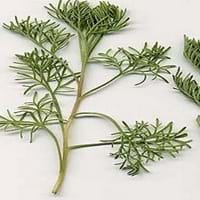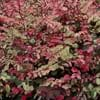Life Span
Perennial
Perennial
Origin
Southern Europe
Mexico, Central America
Types
not available
Reinikie, Dade, Pike, Suebelle and Golden
Climate
Number of Varieties
Not Available
Habitat
Temperate Regions
Tropical Highlands
USDA Hardiness Zone
5-8
8-11
Sunset Zone
2b, 3a, 3b, 4, 5, 6, 7, 8, 9, 10, 11, 12, 13, 14, 15, 16, 17, 18, 19, 20, 21, 22, 23, 24
H1, H2, 14, 15, 16, 17, 18, 19, 20, 21, 22, 23, 24
Habit
Upright/Erect
Oval or Rounded
Minimum Height
Not Available
Minimum Width
Not Available
Flower Color
Yellow, Gray
Light Green, Ivory
Flower Color Modifier
Not Available
Bicolor
Fruit Color
Non Fruiting Plant
Light Yellow, Yellow green, Light Green
Leaf Color in Spring
Gray Green
Green, Dark Green
Leaf Color in Summer
Gray Green
Green, Dark Green
Leaf Color in Fall
Gray Green
Green, Dark Green
Leaf Color in Winter
Not Available
Light Green
Leaf Shape
Long hair-like leaves
Alternate
Plant Season
Spring, Summer, Fall
Spring, Summer, Fall, Winter
Sunlight
Full Sun
Full Sun
Type of Soil
Loam
Loam, Sand
The pH of Soil
Neutral
Acidic, Neutral
Soil Drainage
Well drained
Well drained
Bloom Time
Late Summer
Winter, Late Winter
Tolerances
Not Available
Drought
Where to Plant?
Ground, Pot
Ground
How to Plant?
Cuttings, Seedlings
Budding, Grafting, Seedlings, Vegetative
Plant Maintenance
Medium
Medium
Watering Requirements
Average Water Needs, Keep the Soil well drained
Do not water frequently, Needs more water during establishment, Water during dry weather
In Summer
Lots of watering
Lots of watering
In Spring
Moderate
Moderate
In Winter
Average Water
Average Water
Soil pH
Neutral
Acidic, Neutral
Soil Type
Loam
Loam, Sand
Soil Drainage Capacity
Well drained
Well drained
Sun Exposure
Full Sun
Full Sun
Pruning
Cut back old stems to the ground, Remove damaged leaves, Remove dead branches, Remove dead leaves
Remove damaged leaves, Remove dead branches, Remove dead leaves
Fertilizers
All-Purpose Liquid Fertilizer, Complete balanced fertilizer
All-Purpose Liquid Fertilizer
Pests and Diseases
Free of serious pests and diseases
Red blotch
Plant Tolerance
Drought
Drought
Flowers
Insignificant
Insignificant
Flower Petal Number
Not Available
Single
Fragrant Flower
No
Not Available
Foliage Texture
Medium
Medium
Foliage Sheen
Matte
Matte
Attracts
Not Available
Birds
Allergy
Skin irritation
drowsiness
Aesthetic Uses
Farmland, small hedge, Wild gardens
Not Used For Aesthetic Purpose
Beauty Benefits
Not Available
Not Available
Environmental Uses
Air purification
Air purification
Medicinal Uses
Antiseptic, Digestive, Liver problems, Skin Disorders, Tonic
Anti-carcinogenic effects, Colon Cancer
Part of Plant Used
Branch, Fibres, Flower Stalk, Gum, Leaves, Twigs
Fruits, Pulp, Seeds
Other Uses
Oil is used in mosquito repellents, Used for fragrance, Used to make hair tonic
Used As Food
Used As Indoor Plant
No
No
Used As Outdoor Plant
Yes
Yes
Garden Design
Herb, Vegetable, Mixed Border, Rock Garden, Wall
Edible, Fruit / Fruit Tree, Shade Trees, Tropical
Botanical Name
ARTEMISIA abrotanum
CASIMIROA edulis
Common Name
lad's love , southern wormwood , old man , boy's love , appleringie , sitherwood
White Sapote
In Hindi
southernwood
White Sapote
In German
Eberraute
White Sapote
In French
aurone ou citronnelle
Sapote blanche
In Spanish
Artemisia abrotanum
White Sapote
In Greek
Artemisia abrotanum
White Sapote
In Portuguese
Abrótano
White Sapote
In Polish
Bylica boże drzewko
White Sapote
In Latin
Southernwood
White Sapote
Phylum
Magnoliophyta
Magnoliophyta
Class
Magnoliopsida
Magnoliopsida
Order
Asterales
Sapindales
Family
Asteraceae
Rutaceae
Genus
Artemisia
Casimiroa
Clade
Angiosperms, Asterids, Eudicots
Angiosperms, Eudicots, Rosids
Tribe
Anthemideae
Not Available
Subfamily
Asteroideae
Not Applicable
Number of Species
Not Available
Season and Care of Southernwood and White Sapote
Season and care of Southernwood and White Sapote is important to know. While considering everything about Southernwood and White Sapote Care, growing season is an essential factor. Southernwood season is Spring, Summer and Fall and White Sapote season is Spring, Summer and Fall. The type of soil for Southernwood is Loam and for White Sapote is Loam, Sand while the PH of soil for Southernwood is Neutral and for White Sapote is Acidic, Neutral.
Southernwood and White Sapote Physical Information
Southernwood and White Sapote physical information is very important for comparison. Southernwood height is Not Available and width Not Available whereas White Sapote height is 610.00 cm and width 760.00 cm. The color specification of Southernwood and White Sapote are as follows:
Southernwood flower color: Yellow and Gray
Southernwood leaf color: Gray Green
White Sapote flower color: Light Green and Ivory
- White Sapote leaf color: Green and Dark Green
Care of Southernwood and White Sapote
Care of Southernwood and White Sapote include pruning, fertilizers, watering etc. Southernwood pruning is done Cut back old stems to the ground, Remove damaged leaves, Remove dead branches and Remove dead leaves and White Sapote pruning is done Remove damaged leaves, Remove dead branches and Remove dead leaves. In summer Southernwood needs Lots of watering and in winter, it needs Average Water. Whereas, in summer White Sapote needs Lots of watering and in winter, it needs Average Water.





